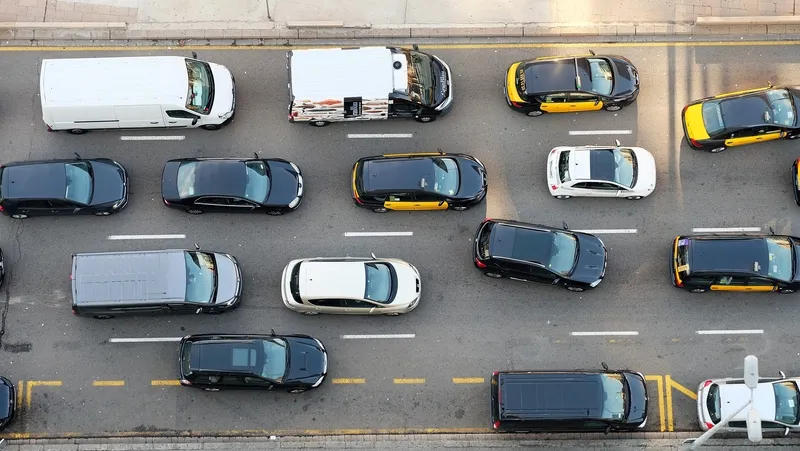The Markets and Markets report Car Safety Market by System Type (Active Safety & Passive Safety), Safety Regulations by Region (APAC, Europe, North America & Rest of the World), Impact Analysis (Overall Market OEM, Tier I & Consumer) - Trends & Forecast to 2020 estimates the market to be US$93.73 billion in 2015 and projects that it will grow at a CAGR of 10.24 per cent to reach US$152.59 billion by 2020.
The market report defines and segments the automotive safety systems market with an impact analysis
January 20, 2016
Read time: 3 mins
The Markets and Markets report Car Safety Market by System Type (Active Safety & Passive Safety), Safety Regulations by Region (APAC, Europe, North America & Rest of the World), Impact Analysis (Overall Market OEM, Tier I & Consumer) - Trends & Forecast to 2020 estimates the market to be US$93.73 billion in 2015 and projects that it will grow at a CAGR of 10.24 per cent to reach US$152.59 billion by 2020.
The market report defines and segments the automotive safety systems market with an impact analysis and forecast of the global market size and by value.
The automotive safety systems market has witnessed considerable growth in countries such as the US, China, India, and Mexico, owing to increasing vehicle electrification, rising vehicle production, and progressively stringent safety norms.
Active safety includes pre-crash warning, prevention, and post-crash rescue management. Active safety, as a production technology, is in the nascent stage of development, but has substantial potential to reduce the harmful effects of road traffic accidents on occupants and pedestrians. The ultimate goal is to create an accident-proof vehicle, which informs the driver of hazards and intervenes, whenever necessary, to avoid disaster. The active safety systems market, by value, is estimated to grow at a higher CAGR than passive safety systems from 2015 to 2020. This report forecasts the future scenario of the active safety systems market in major countries.
Features such as antilock braking systems (ABS) and tire pressure monitoring systems (TPMS) are now mandatory in regions such as North America and Europe. This has resulted in the increasing usage of safety systems in the region. The sales statistics for North America indicate promising growth potential, due to the increasing sales of pick-up trucks and SUVs. The region also has stringent emission and fuel economy standards.
Questions arise with regard to insurance coverage when a vehicle controls a number of major functions, but still requires constant attention from the driver, and when the driver's attention is reduced to the extent that they can focus on other activities. In either case, defining fault and liability in the event of a collision is almost impossible. As driver inputs are not constant, evaluating a collision to determine when a driver is in control or in the process of continually regaining and relinquishing control and is thus responsible for driving, is a difficult task. Another layer of complexity is introduced when vehicles communicate with one another to coordinate their activities. In this case, determining which vehicle was the cause of the collision-inducing action may be difficult.
The market report defines and segments the automotive safety systems market with an impact analysis and forecast of the global market size and by value.
The automotive safety systems market has witnessed considerable growth in countries such as the US, China, India, and Mexico, owing to increasing vehicle electrification, rising vehicle production, and progressively stringent safety norms.
Active safety includes pre-crash warning, prevention, and post-crash rescue management. Active safety, as a production technology, is in the nascent stage of development, but has substantial potential to reduce the harmful effects of road traffic accidents on occupants and pedestrians. The ultimate goal is to create an accident-proof vehicle, which informs the driver of hazards and intervenes, whenever necessary, to avoid disaster. The active safety systems market, by value, is estimated to grow at a higher CAGR than passive safety systems from 2015 to 2020. This report forecasts the future scenario of the active safety systems market in major countries.
Features such as antilock braking systems (ABS) and tire pressure monitoring systems (TPMS) are now mandatory in regions such as North America and Europe. This has resulted in the increasing usage of safety systems in the region. The sales statistics for North America indicate promising growth potential, due to the increasing sales of pick-up trucks and SUVs. The region also has stringent emission and fuel economy standards.
Questions arise with regard to insurance coverage when a vehicle controls a number of major functions, but still requires constant attention from the driver, and when the driver's attention is reduced to the extent that they can focus on other activities. In either case, defining fault and liability in the event of a collision is almost impossible. As driver inputs are not constant, evaluating a collision to determine when a driver is in control or in the process of continually regaining and relinquishing control and is thus responsible for driving, is a difficult task. Another layer of complexity is introduced when vehicles communicate with one another to coordinate their activities. In this case, determining which vehicle was the cause of the collision-inducing action may be difficult.








